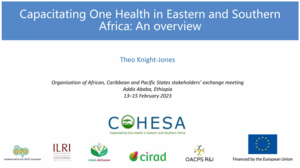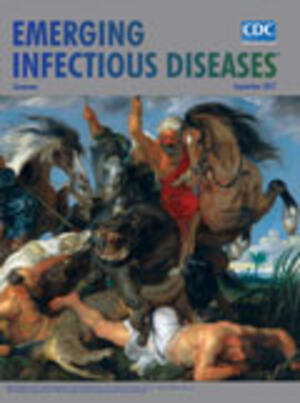
An exploratory GIS-based method to identify and characterise landscapes with an elevated epidemiological risk of Rhodesian human African trypanosomiasis
Abstract
Specific land cover types and activities have been correlated with Trypanosoma brucei rhodesiense distributions, indicating the importance of landscape for epidemiological risk. However, methods proposed to identify specific areas with elevated epidemiological risk (i.e. where transmission is more likely to occur) tend to be costly and time consuming. This paper proposes an exploratory spatial analysis using geo-referenced human African trypanosomiasis (HAT) cases and matched controls from Serere hospital, Uganda (December 1998 to November 2002) to identify areas with an elevated epidemiological risk of HAT. Buffers 3 km from each case and control were used to represent areas in which village inhabitants would carry out their daily activities. It was hypothesised that the selection of areas where several case village buffers overlapped would enable the identification of locations with increased risk of HAT transmission, as these areas were more likely to be frequented by HAT cases in several surrounding villages. The landscape within these overlap areas should more closely relate to the environment in which transmission occurs as opposed to using the full buffer areas. The analysis was carried out for each of four annual periods, for both cases and controls, using a series of threshold values (number of overlapping buffers), including a threshold of one, which represented the benchmark (e.g. use of the full buffer area as opposed to the overlap areas). A greater proportion of the overlap areas for cases consisted of seasonally flooding grassland and lake fringe swamp, than the control overlap areas, correlating well with the preferred habitat of the predominant tsetse species within the study area (Glossina fuscipes fuscipes). The use of overlap areas also resulted in a greater difference between case and control landscapes, when compared with the benchmark (using the full buffer area). These results indicate that the overlap analysis has enabled the selection of areas more likely to represent epidemiological risk zones than similar analyses using full buffer areas. The identification of potential epidemiological risk zones using this method requires fewer data than other proposed methods and further development may provide vital information for the targeting of control measures.
Citation
Wardrop, N.A., Fèvre, E.M., Atkinson, P.M., Kakembo, A. and Welburn, S.C. 2012. An exploratory GIS-based method to identify and characterise landscapes with an elevated epidemiological risk of Rhodesian human African trypanosomiasis. BMC Infectious Diseases 12: 316










